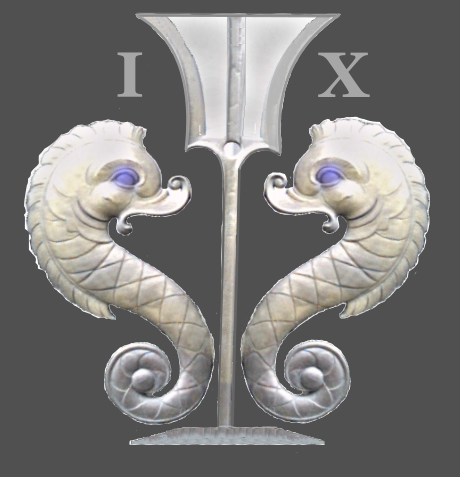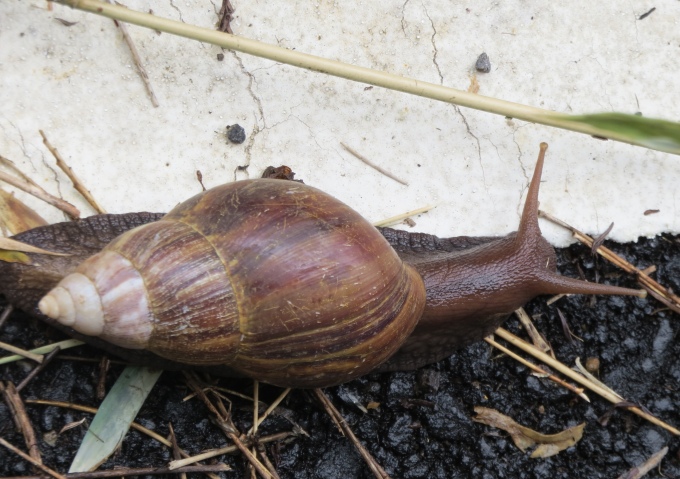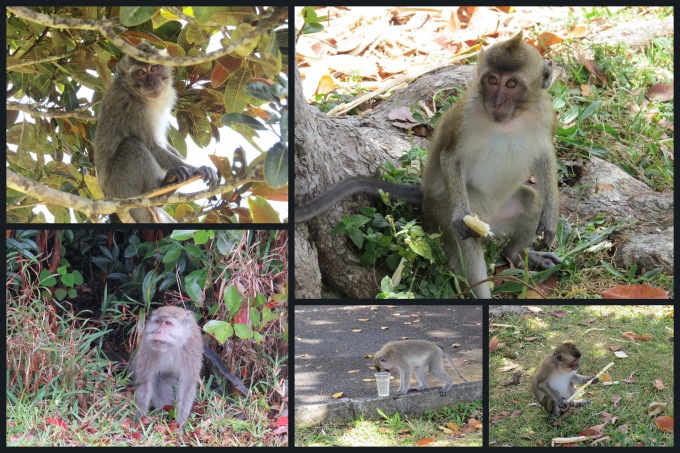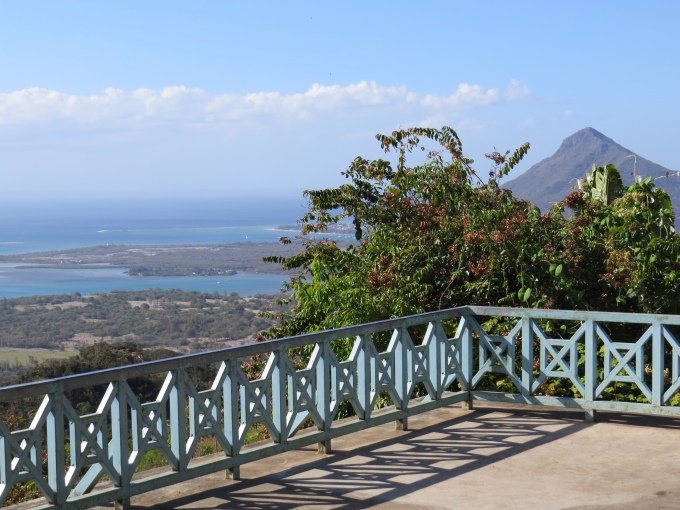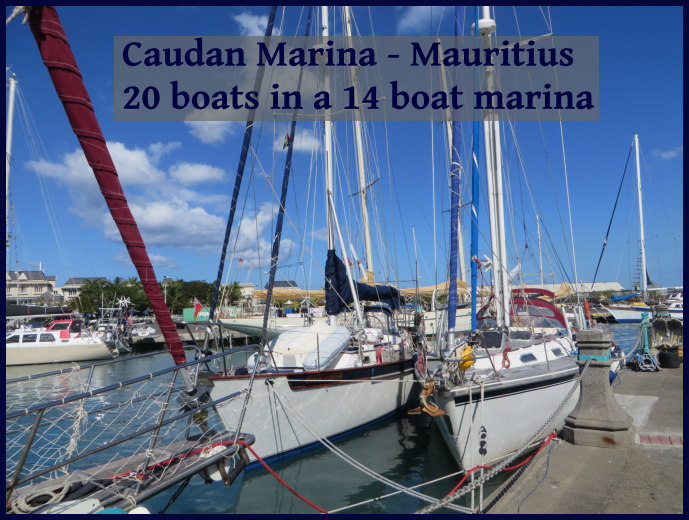An Accidental Tour - Black River Gorge NP
/There were no cabs as we were leaving Grand Bassin, so we decided to walk along the narrow road back to Bois Cheri to catch a bus. A 5km walk (3 miles) was good exercise and besides, we always see more when we walk than when we ride. Sure enough, we hadn't gone a mile when David spotted a gigantic snail slime-ing his way along the side of the road. We were thinking escargot, but this guy looked big enough to fight back (you know how vicious snails can be), so we let him be.
We walked past tea fields, thick and green with leaves to be harvested. About a mile from the bus stop, a small car stopped and a Mauritian fellow waved us over. Robin asked where we were from and we chatted amiably on the side of the road. He said he was a senior advisor to the Prime Minister and he'd just come from the temple. He had a free day and in the interest of friendship, would we like to perhaps tour the Black River Gorge National Park and return to Port Louis along the coast road. We were skeptical. He allayed our concerns, assuring us he wanted no remuneration other than perhaps a contribution for gasoline and after due consideration, we hopped in the car and off we went.
This was not quite a 90-day event as we were to find out. He stopped for gas and we asked how much he needed … 1,000 Rps ($33.33US), he suggested … that seemed fair. He then asked if we'd like to stop for lunch and he described a Hindu restaurant along the way that he thought we'd like. It sounded wonderful and we, of course, felt obligated to pay for his lunch since he was such a generous host. It was a wonderful lunch of several Hindu specialties, served on a banana leaf and eaten with our fingers. The check at the end was a bit hard to swallow, however we chocked it up to a delightful eating experience and moved on. We were a bit suspicious that everyone at the restaurant seemed to know him and he disappeared for a few minutes after we paid the check, ostensibly to wash his hands.
We headed to the Black River Gorge National Park, high in the hills. He definitely knew his way around and skirted through alleys and back roads to avoid traffic. He just seemed too familiar with the area to be anything other than a tour guide. We viewed a few waterfalls along the route and he asked if there was anything in particular we wanted to see. “Monkeys”, I requested. He said we'd see lots and he was as good as his word. Long-tailed macaques (ma-KACKs), introduced by the Dutch in the 17th century, were quite numerous as we moved along the road through the national park, especially in areas where they received hand-outs from humans.
Robin asked if we liked wine. We said “yes” in unison, then thought we'd spoken too soon. He said Mauritius made a special lychee wine and liqueur that he knew we'd like and he'd taken the liberty of ordering some for us. “Oh, no... that's okay.” “Oh, I insist”, he said, “this wine is saved for dignitaries and only drunk on special occasions.” Obviously, we were special enough to buy some. Lucky us. We could have refused, I guess, but we didn't. We went with the flow and $50 later, we were the proud owners of two bland-looking, dull labeled, screw-top bottles of lychee wine and liqueur. We'll tell you how it tastes as soon as we have a special occasion to try it. Can hardly wait!
We continued along, Robin providing commentary as we went. As is many times the case, what is viewed as particularly special on a little island is not necessarily a unique world class site/sight. We didn't realize there was a fee to enter Chamarel, until we were in the queue for buying our tickets with no place to turn around. We would have given it a pass, but Robin insisted we'd never seen anything like it. The “Earth of Seven Colors” at Chamarel was interesting and scenic. Had we never seen the Painted Desert, the Badlands or Yosemite's colors, we might have been impressed, but we had seen them and Charmarel paled in comparison. Robin dropped us off and waited … hmmm … much like a tour guide might do.
Perhaps we're becoming jaded. Waterfalls, unless they're Niagara, Iguazu or Victoria, do not impress us any more either. Again, they were scenic and lovely to look at, but not all that dramatic. Of the several we saw, the Chamarel Falls were probably the best.
We descended from the mountains on narrow, switch-backed roads that Robin negotiated at a higher speed than we would have expected. Passing on curves and on steep, narrow stretches seem to be the norm, not the exception here. We had a few close calls, but no harm, no foul. We stopped at an overlook of the coast at Ilot Fortier that was really beautiful with a good view of Piton de la Petite Rivière Noire, Mauritius' highest mountain at 2,717' (828m).
The ride back to Port Louis was long and tiresome with heavy, slow-moving traffic. Robin was obviously tired, as were we. He worked hard to keep up the conversation, but we'd depleted all reasonable topics and a quiet set in until he tuned the radio to some lively Indian music and hummed along. As promised, he let us out near the marina and though we felt he was a bit of a charlatan, we hadn't been fleeced all that badly. We chocked it up to an island experience.
